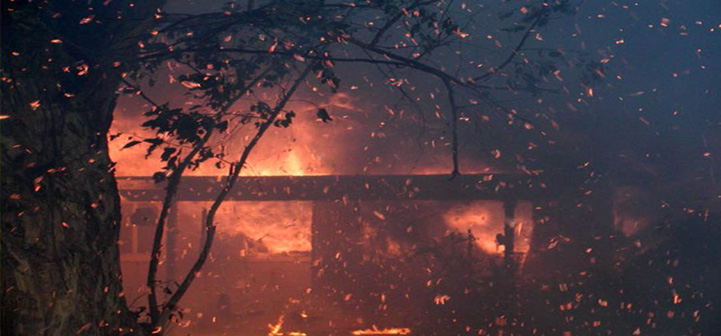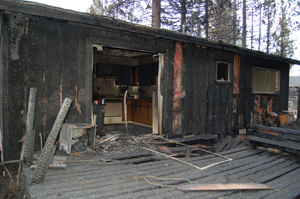Safely Returning to Your Home after a Wildfire
Many homeowners wonder when it is safe to return to their homes after a wildfire. Once you are given the “all clear” to go home, what you should look for outside and inside the home to ensure you and your families safety?
In most states, permission to return home after a wildfire is usually given by a local fire or law enforcement authority such as your county sheriff’s office. They deem it safe to return to your home once the wildfire and any home fires have been extinguished and when other hazards, such as downed power lines, do not pose a threat.
Use Caution When Returning to Your Property
You should be prepared for any hazards that may be present by being properly dressed. Wear boots, long pants, and a long-sleeved shirt. As there may be smoke and ash present, you may want a dust mask as well.
Things to Look For
- • charred trees and power poles that may be unstable;
- • live power lines that may be on the ground;
- • spot fires and smoldering debris;
- • live embers;
- • ash pits (holes created by burned trees filled with hot ash).
Before Entering Your Home
- • FIRST check for the smell of gas. If you smell gas, leave the house and turn the supply off at the tank or outside valve. Open the doors and windows, and contact your utility provider.
- • Check for electrical power. If there is power, temporarily turn it off until you’ve completed your inspection. If there is no power, see if the main breaker is on.
- • Inspect your roof and attic for sparks or embers, and wet them down immediately. Embers can enter attics through attic vents if not properly screened.
- • Check roofs and floors to be sure they are structurally safe before entering.
- • Check for and extinguish any burning embers or smoldering debris found on your roof, in rain gutters, on the porch, or anywhere else on your property. Check back frequently over the course of several days to make sure they are completely out.
Once Inside Your Home
- • Check for embers and smoke in the attic and crawl space. Do this every day for several days.
- • Beware of hot spots, dust, ash, broken glass, and other sharp objects.
- • Do not start cleaning or throwing away anything until you have contacted your insurance company.
- • Ask your insurance provider what you should do about covering broken windows, doors, and other exposed areas, pumping out water, and any other activities you may need to do to secure your home.
- • Take pictures and/or video, and start a list of damaged belongings.
- • Continue wearing boots, heavy clothing, and rubber gloves when sifting through debris and handling hazardous materials (cleaning solvents, paints, batteries, etc).
- • Wear a mask while sifting through debris to avoid breathing in smoke and ash.
- • Do not allow children to play in the area.
- • Be aware that animals may have taken shelter in your home, garage, or outbuildings. Leaving a door open door will allow animals to return on their own to their natural surroundings.
- • Animals that appear injured or unwilling to leave may require you to call animal control.
- • Contact your utility providers (water, natural gas, and electricity) to restore service.
Article Written by:
Yvonne Barkley, University of Idaho Extension, Moscow, ID and
Stephen Fitzgerald, Oregon State University Extension, Redmond, OR

